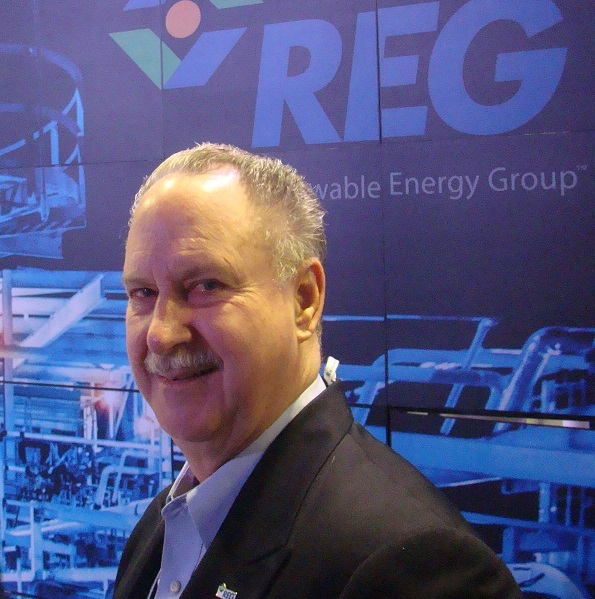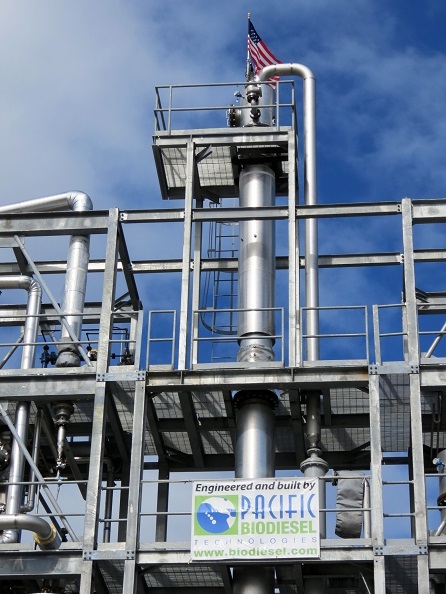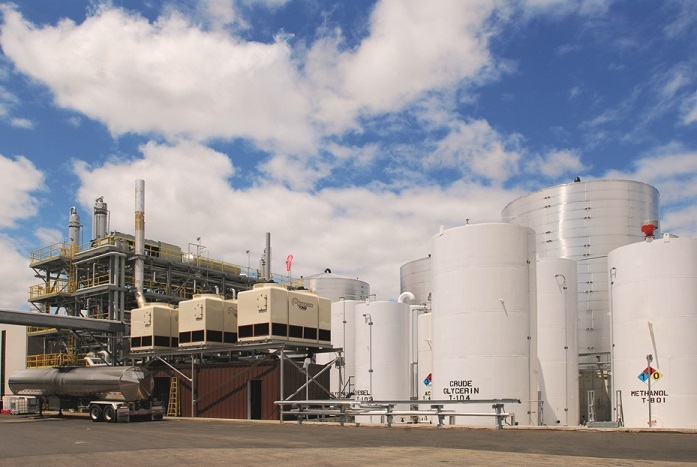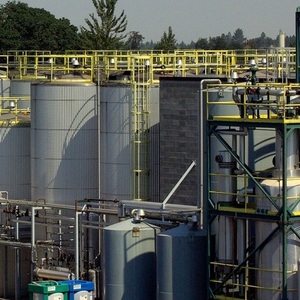Despite challenges, 2017 was a solid year for US biodiesel





Photo: SeQuential
February 1, 2018
BY Ron Kotrba
In terms of the U.S. market for biodiesel, 2017 was not a record-breaking year, as was 2016, but it was also not a bad year for production and demand either, particularly considering that the industry faced numerous challenges.
“It was a record biodiesel production year for SeQuential,” Tyson Keever, CEO of SeQuential, told Biodiesel Magazine.
The company touts its plant in Salem, Oregon, as the longest-running commercial biodiesel production facility on the West Coast.
“We are currently expanding the plant in a few phases,” Keever said, “and we are already on pace for a new production record in 2018.”
According to the U.S. EPA’s EMTS data for 2017, the U.S. market for biodiesel and renewable diesel topped 2.6 billion gallons. In 2016, the U.S. market approached 2.9 billion gallons.
“The U.S. biodiesel and renewable diesel market was the second largest in our history last year, despite facing numerous challenges as an industry,” said Donnell Rehagen, National Biodiesel Board CEO. “The industry had to conduct business with the biodiesel tax incentive lapsed, and EPA having issued a proposal midyear to slash our volumes under the RFS.”
Additional trials biodiesel producers encountered last year include a new administration stacked with climate change deniers and proponents of fossil fuels, a trade dispute with Indonesia and Argentina that preoccupied NBB for the better part of a year, the U.S. EPA’s NODA threat that sought to further reduce already established biodiesel volumes, and a disappointing RFS final rule that essentially flat-lines both advanced and biomass-based diesel volumes for 2018-’19.
“Yet our industry still rose to the challenge and proved that we can provide higher volumes of advanced biofuels to American consumers,” Rehagen said.
Advertisement
Advertisement
EMTS data show domestic production of biodiesel and renewable diesel exceeded 1.8 billion gallons last year, down slightly from 1.9 billion gallons in 2016.
Combined biodiesel and renewable diesel imports in 2017 still remained high at roughly 810 million gallons, according to EMTS data. Most of this was D4 biodiesel and renewable diesel, but roughly 144 million gallons of D6 renewable diesel—presumed palm-based product from Neste—is included in the imported volumes.
For 2016, EMTS data show 1.02 billion gallons of imports (including 279 million gallons of D6 biodiesel and renewable diesel assumed to be imported palm product) while data from the U.S. Energy Information Administration demonstrate more than 915 million gallons of combined imports for 2016.
The EIA’s complete 2017 import record is not yet available.
EMTS data show biodiesel volumes generating D4 RINs domestically and abroad for the 2017 U.S. market approached 2.05 billion gallons. Combined biodiesel and renewable diesel D4 RIN generation was approximately 2.5 billion gallons. When the 144 million gallons of D6 renewable diesel is added to this, the total U.S. market for biodiesel and renewable diesel for 2017 proved in excess of 2.6 billion gallons.
The 2017 market driver was rooted in an advanced biofuel renewable volume obligation (RVO) under the Renewable Fuel Standard of 4.28 billion gallons (2.85 billion biodiesel-equivalent gallons), within which was nested a biomass-based diesel RVO of 2 billion gallons. When other advanced biofuels such as D3 compressed and liquefied renewable natural gases, D3 cellulosic biofuel and D5 ethanol volumes, the collective biofuels industries exceeded their advanced mark in 2017, despite the uncertainty.
For Pacific Biodiesel, 2017 marked five years of operation at its biodiesel refinery on the big island of Hawaii, and a number of upgrades were completed at the facility last year.
“The upgrades included the construction of a new shipping and receiving loading bay, ISO container loading platform, a pretreatment filtration trough system and three new reactors for more efficient production and storage capabilities,” said Plant Manager Tony Pastrama.
Pacific Biodiesel saw record production last year, exceeding its annual nameplate capacity of 5.5 million gallons for the first time. These successes, however, do not mean the company is having an easy go of it.
Advertisement
Advertisement
“In 2017 we faced continued low petroleum prices and waning federal support of renewables, including the lapse of the federal excise tax credit that has yet to be reinstated,” Bob King, president and founder of Pacific Biodiesel, told Biodiesel Magazine. “Without the benefit of government subsidies and other support such as previous credits given to the wind and solar industries, biofuels continue to face challenges. Still, we remain optimistic.”
In addition to facility upgrades, Pacific Biodiesel signed a new, three-year supply contract with Hawaiian Electric Co. and began farming sunflowers in Maui’s central valley to make value-added products such as food-grade and cosmetic oils to supplement the cost of biodiesel feedstock, King said.
Randy Howard, the interim president and CEO of Renewable Energy Group, the largest biodiesel producer in North America, told Biodiesel Magazine that the company’s 11 U.S.-based biodiesel and renewable diesel plants broke 120 records last year on weekly, monthly and annual bases.
“Our industry has been put on notice by EPA,” Howard said. “With duties on Argentine and Indonesian imports, our industry has to perform. I have no doubt it will.”
Howard added that REG is actively exploring how the company can grow production capacity at each of its facilities through debottlenecking and other techniques.
“We have sizable opportunities to increase our capacity 5 to 10 percent a year organically,” he said. With nearly 500 million gallons of U.S. productive capacity, this incremental growth can produce significant volumes.
“We deliver two things,” Howard continued. “High-quality biodiesel, and high-quality compliance. We believe you earn the right to grow from your customers.”
Rehagen said stable tax policy and reasonable increases in RFS volumes will produce far greater investment, job creation and growth in the U.S. biodiesel industry.
“It’s definitely a challenging time,” Bob Morton, chairman of Rhode Island-based Newport Biodiesel, told Biodiesel Magazine, “but it’s also an exciting time for this industry.”
Related Stories
The U.S. EPA on July 29 released a proposed rule to repeal the agency’s 2009 Endangerment Finding, which forms the legal basis for the agency’s GHG regulations. The proposal also aims to repeal all GHG regulations for motor vehicles and engines.
ATOBA Energy and Air Moana are partnering to implement scalable solutions for the supply of SAF. The collaboration aims to ensure long-term SAF availability while supporting local initiatives to develop sustainable fuel production in Tahiti.
While final IRS guidance is still pending, the foundation of the 45Z program is well defined. Clean fuel producers should no longer be waiting; they can now move forward with critical planning and preparation, according to EcoEngineers.
The IRS on July 21 published a notice announcing the 2025 calendar-year inflation adjustment factor for the Section 45Z clen fuel production credit. The resulting adjustment boosts maximum the value of the credit by approximately 6%.
The U.S. Senate on July 23 voted 48 to 47 to confirm the appointment of Aaron Szabo to serve as assistant administrator of the U.S. EPA’s Office of Air and Radiation. Biofuel groups are congratulating him on his appointment.
Upcoming Events










